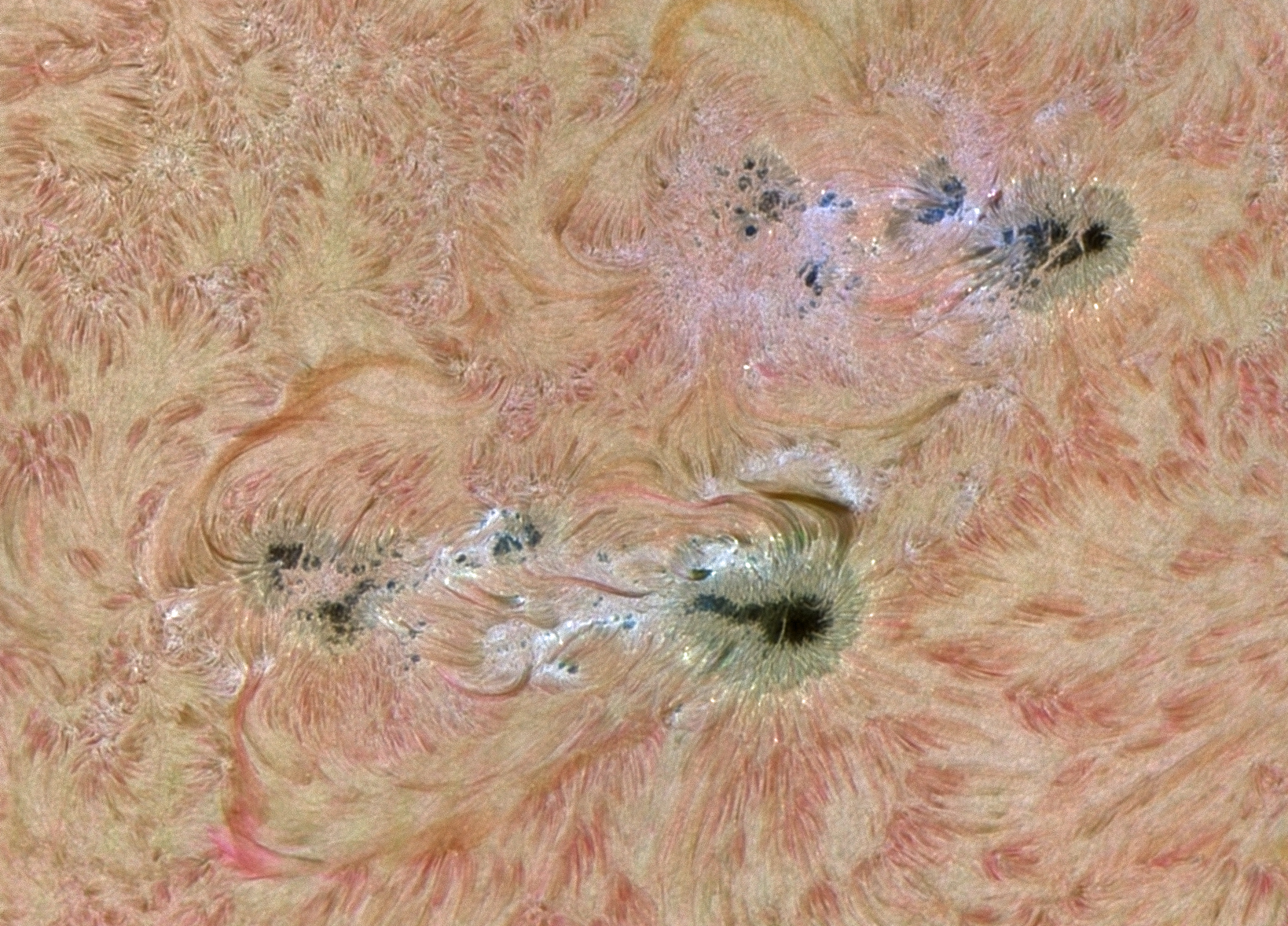
Caption: Active region 2080 (upper part of image) was one week old when this image was taken and it featured a beta-gamma-delta magnetic field due to a compact delta spot in the trailing part of the region. The delta spot has earlier yielded multiple C-class flares and also an impulsive M1.4 solar flare. Just south of region 2080 is newly formed region 2085 that was growing fairly rapidly in a beta-gamma magnetic layout. I was hoping that something in these AR's was going to blow while I watched but it didn't. Just 45 minutes later newly formed AR2087 produced two impressive X-class flares in quick succession. The image is a L-RGB composite where the L-channel comes from a 6" refractor while the RGB is a special color image made using my tri-band technique with a 70mm refractor. Some people prefer the blueish hues that arise when the RGB channels are reversed, so here's a version for them.
Conditions: cloudy morning followed by clear skies at noon. Weak wind, no clouds, quite warm (25C).
Setup: 6" refractor with Daystar H-alpha filter and Grasshopper USB3 camera. Piggybacking this I had a 70mm refractor with a Coronado H-alpha filter and a Skynyx 2-2M USB2 camera. Two laptops and a Tak EM200 mount completed this crazy setup. The 6" produces high resolution images at the H-alpha wavelength while the 70mm makes lower resolution images which can quickly by detuned from the H-alpha line. Such detuning enables me to make a tri-band color image which can then be used to colorize the high resolution view. Click for image.
Acquisition - 6" Daystar: best 60 out of 2000 frames shot over 70 seconds. Exposure time was 5msec with 26 frames pr. second.
Acquisition - 70mm Coronado: best 60 out of ~500 frames from three sequences shot over 3 x 20 seconds with zero, medium, maximum detuning from the H-alpha line.
Here's my main page where you can see more of the pictures I have taken so far.
Comments greatly appreciated! (mikael@leif.org)